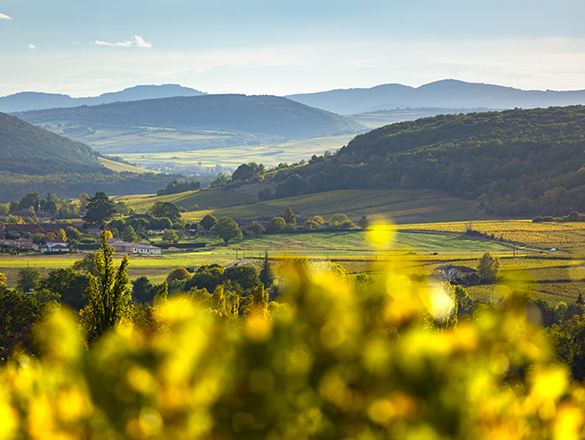
The vineyards of Bourgogne produce some great wines with a historical and international reputation. However, the region is not simply limited to its iconic appellations. In addition to its Village Premier Cru and Grand Cru AOCs, it also produces a range of wonderful Régionale and Village appellations to explore.
You will also find a full list of the Bourgogne’s Climats and lieux-dits on this page.
Check out the complete list of the 84 Bourgogne appellations.
However, your exploration has only just begun. Bourgogne wines have never before offered such high quality. Besides our range of internationally celebrated wines, try some of our lesser-known appellations where there are lots of surprises in store.
And for a fun way to find out more about the wines on offer, try out our “Which Bourgogne wine is right for me?” quiz, or check out Bourgogne Maps to take an interactive tour of the region.
Regional Appellation
VIGNOBLE DU MÂCONNAIS
31 juillet 1937
Whites - Chardonnay.
Reds and rosés - Gamay.
Area under vine:
Whites: 104.13 ha
Reds and rosés: 1.37 ha
Average annual harvest:
Whites: 738,009 bottles
Reds and rosés: 8,491 bottles
Source: 5-year average, 2017-2021
An additional geographical denomination that is part of the Régionale Mâcon appellation in the Mâconnais. According to the 2005 specifications rules, the name Mâcon-Péronne refers to white, red, and rosé wines grown within a defined area in the villages of Péronne, Saint-Maurice-de-Satonnay, and Clessé.

Mâcon-Péronne whites are a lovely gold color with hints of green. They have two distinct aromatic profiles, just like the terroir. The limestone terrain produces wines with indulgent notes of ripe summer fruit like melon and grapes. In the mouth, they are fleshy and round with good length. The flinty soil brings a more discreet intensity, more floral than fruity, with notes of aniseed, box, and rocky southern scrubland. This mineral sensation is accompanied by a vigorous attack in the mouth, but one which is no less broad for it.

With its sunny aromatic character and smoothness on the tongue, this wine makes a natural pairing with all kinds of goat cheeses, such as the traditional AOC Mâconnais or its neighboring Charolais for a terroir-themed aperitif. Follow with grilled chicken supremes or mixed fried river fish. This white wine will also bring out the best in local freshwater fish dishes, such as carp with white wine, or pôchouse from Verdun-sur-le-Doubs.
Serving temperatures: 10-11°C as an aperitif, 11-12°C with food.

In the heart of the central Mâconnais, the Mâcon-Péronne AOC is found on either side of the Bicheron river. The vines on the western slope at Saint-Pierrede-Lanques run alongside the first plots of Mâcon-Lugny, while to the east, the vines are planted on the first western slope of the Viré-Clessé range.
The name of Saint-Pierre-de-Lanques and the keys of the apostle, heaven’s gatekeeper, engraved on stones preserved in the village, are clear reminders of the presence of the monks.

Looking down over the valley of the Bicheron river, the sunny slopes of Péronne are open to the south, those from the north being held back by the hilltops of La Croix Sainte-Barbe and La Grosse Roche. The vines on the western slope face the rising sun, while those on the hillside of Péronne to the east mainly face the setting sun.
From west to east, the vines grow on clay and conglomerate, sand and loam from the Pliocene, from the basin of Saint-Maurice-de-Satonnay. From the hillside of Saint-Pierre-de-Lanques, these clay and flint formations are one of the peculiarities of this terroir with its loamy non-limestone soil. The hillside of Péronne offers a substrate of pebbly marl-limestone from the Lower Jurassic, some 200 million years ago.
